With images of soaring peaks, gushing valley rivers and elusive wild animals, high mountains epitomize for many the ultimate, last refuge of Mother Earth. While tackling the Himalayas or the Andes is definitely not for everybody, all of us gardeners may find direct inspiration in these scenic landscapes and their most resilient plants. The trek between Annapurna and your yard may not be as treacherous as you think ...
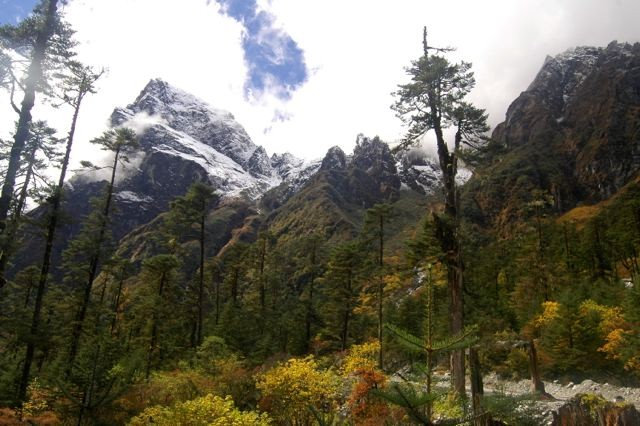
CYAN Horticulture
The Himalayas are by far the most impressive of all mountain ranges — the 100 highest peaks in the world are found here. However, horticulturally interesting plants for most gardeners reside at midelevation, on either side of the tree line.
In this example, located in Sikkim, in Northern India, jagged peaks tightly circumscribe a small valley of botanical riches — dozens of
rhododendron species.
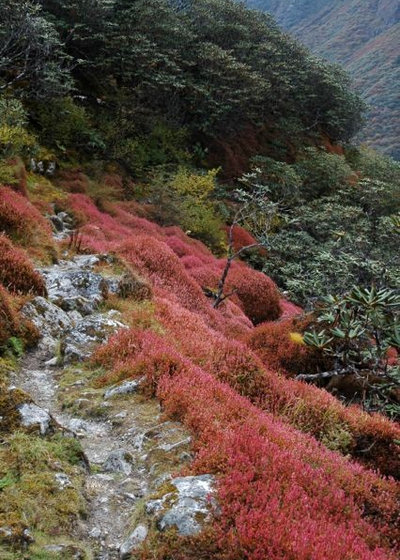
CYAN Horticulture
Nature likes massing plants together — being part of a close-knit group protects against the elements in harsh environments. In the garden, large drifts communicate that our aesthetic choices are intentional. Less is more only in variety, not in quantity.
On Asian alpine slopes, breaks in the shrub cover are filled with carpets of flowers — a
Polygonum of sorts in this case.
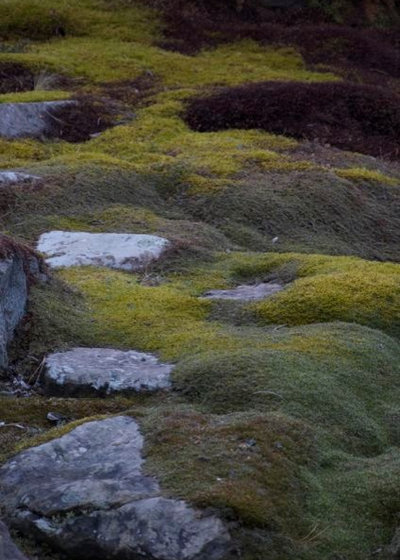
CYAN Horticulture
Such blankets of low, ground-hugging plants are wisely used here in the Alpine Rock Garden of the University of British Columbia. These are all native to New Zealand, a land of weird and wonderful plants, lots of them hardy in zone 8 and above.
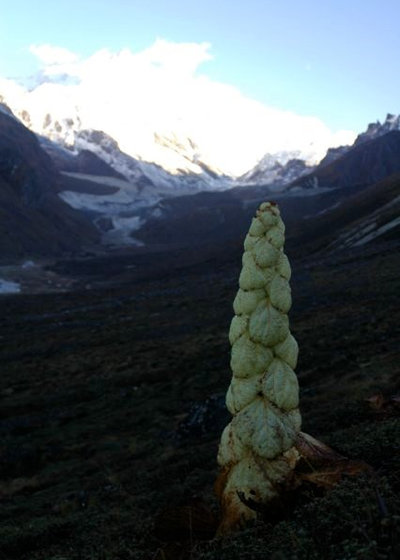
CYAN Horticulture
Vegetation become sparse at higher altitudes — snow is usually not very far off. The highly specialized mechanisms developed by the toughest survivors up here are mind-boggling — a good example resides in this rhubarb (its flowers are hidden under large protective bracts).
Unless we are specialists, with great skills and landscape installations, these plants don't really adapt to cultivation at low altitude. We may look but not lust after them.
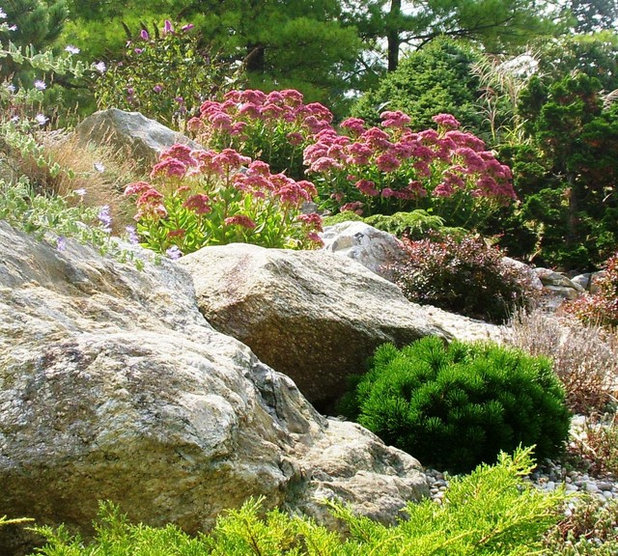
LDAW Landscape Architecture, PC
Let's remain at a slightly lower elevation, then, and observe how plants are often concentrated in nooks and crannies, making the most of the sheltering effect of a boulder, for example. This pattern of distribution — irregular yet distinct — can serve as inspiration for the layout of plants in a garden setting. Plants should not be scattered about; they should be positioned thoughtfully, like in this convincing example that includes stonecrop.
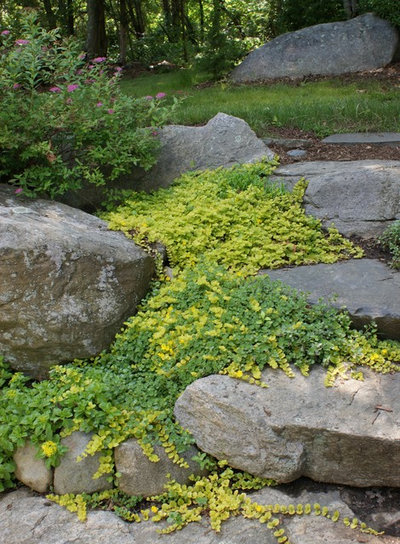
www.KarlGercens.com
There is no escaping it: Since mountains are huge piles of rocks, rocks are most welcome, if not absolutely necessary, to create an alpine-inspired garden. The rocks must be sizable — like these planted with golden creeping jenny — and may also be used structurally to hold a slope or create steps. You can achieve the positioning of these rocks by trial and error, following close observation of natural examples — or by hiring a specialist.
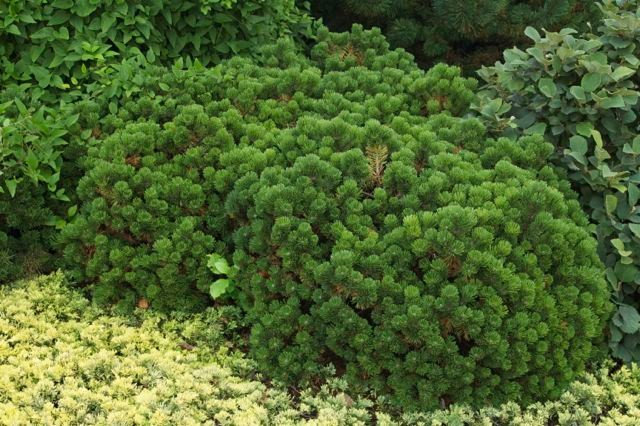
CYAN Horticulture
Small-leaved deciduous shrubs and conifers, prostrate to upright, abound in alpine environments, but none more so than pines. Among the many species, the
mugo pine shown here (
Pinus mugo cvs) excels in cold to mild climates. Dense and rounded, it is perfect to create structure in most compositions and add year-round interest.
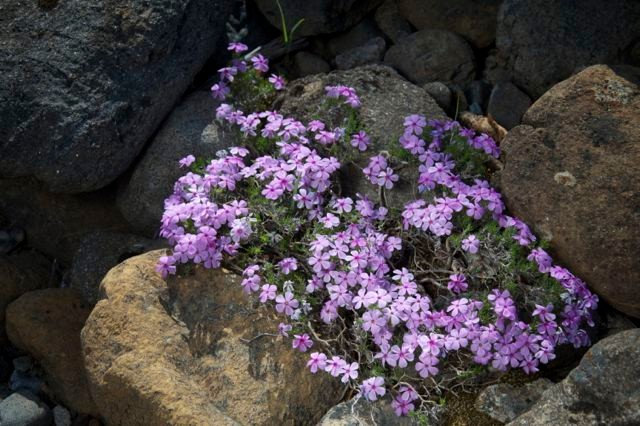
CYAN Horticulture
Once we have laid out our mountain-inspired garden area — whether a small space off the front staircase or a full-on rock garden — and planted its bones, it is time to have fun and add perennials and bulbs. While most plants will bloom early in the season, like this carpeting
phlox, a careful selection will ensure prolonged interest.
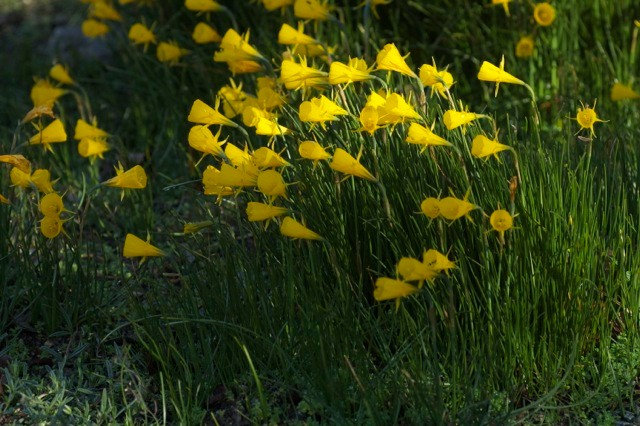
CYAN Horticulture
Bulbs reign in the rock garden — the well-drained soil suits them perfectly. We should focus on the wilder cousins of the cultivated varieties, like this
petticoat daffodil (
Narcissus bulbocodium, zones 6 to 8), those with smaller stature and flowers. They are usually longer lived and will not overpower the surrounding alpine plants.
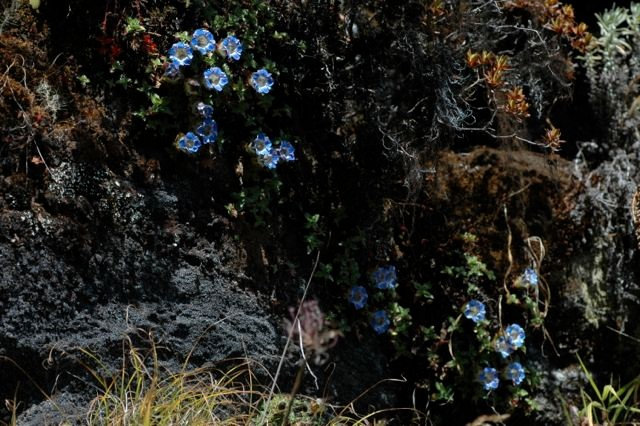
CYAN Horticulture
After some experience with alpine gardening, we may then indulge in some delicate yet oh-so-charming treasures like this sky-blue
gentian. Tucked between rocks, these will most likely become our pride and awe visitors.
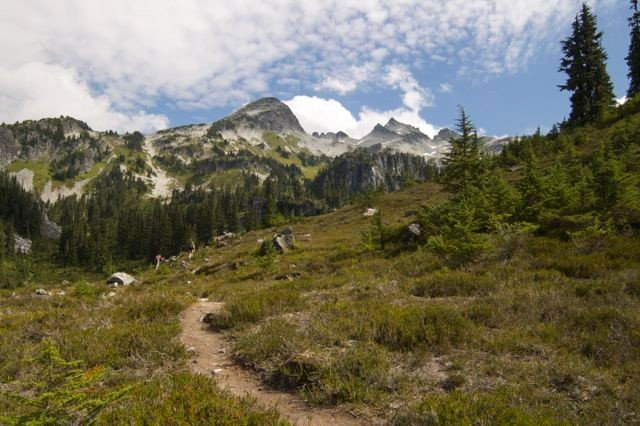
CYAN Horticulture
Still, despite all the alpine plants we may find and successfully cultivate, nothing quite manages to evoke the sense of grandeur felt high up on the trail. Weekend getaway, anybody?
More in this series: Shape a Sea-Inspired Garden | Ideas for a Woodland Garden
Grasslands to Garden | Devise a Desert Garden





